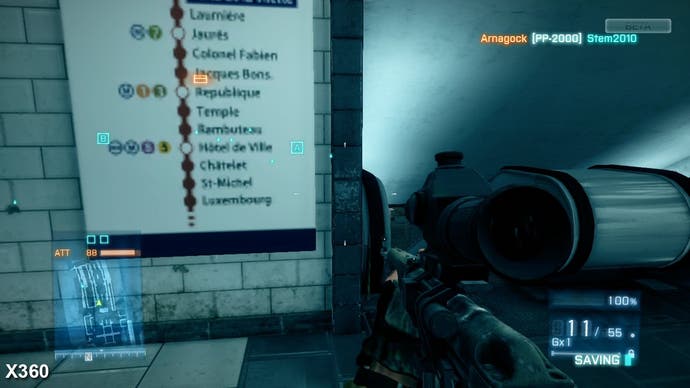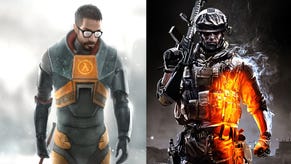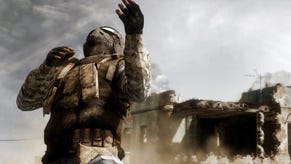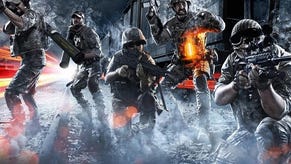Digital Foundry vs. Console Battlefield 3
Technical analysis of campaign and multiplayer code revealed to date.
Of course, it must be pointed out that this is old code. Owing to the submission models adopted by the console platform holders, DICE would have had to send off a version of the game that is at least a month old by the time that users get their hands on it. The bugs and glitches would be entirely forgivable in these circumstances and it's almost impossible to imagine that any of them will appear in the game that ships at the end of the month.
However, those popping LODs which mar the experience so much are surely there for a reason - to balance engine load - and it's difficult to imagine a last minute optimisation effort that can free up enough processing resources to allow for the handling of much higher detail models, and produce the kind of seamless experience we would want. Hopefully DICE can surprise us on this score.
Perhaps the real issue here is that the developer has handed in a genuine "beta" when the term has been misused by the games industry to the point where it has become virtually interchangeable with the more traditional "playable demo". However, with a mere three weeks to go until Battlefield 3 is released, this old code is exactly what will be used to judge the quality of the game by the multitudes playing it, which is a real shame if it is indeed unrepresentative of the product that appears in stores.
Hopefully the Operation Guillotine demo exhibited at the Eurogamer Expo will be released as a standalone demo at some point soon because in terms of the quality of the overall experience, it's clearly much more polished than the multiplayer beta. DICE has already showcased it on Xbox 360 via a recently released gameplay trailer: aside from what we suspect is some nifty v-sync clean-up to aid the overall presentation of the video (we didn't spot a single torn frame, and there are plenty in the PS3 code we played), it looks very close indeed to the PS3 demo we've had hands-on time with.
Based on the "beta-ness" of the multiplayer demo, final conclusions on the quality of the two console versions can't really be judged at this time. The overall feeling you get from playing both builds back-to-back is that the two games are virtually interchangeable - in terms of both the good and bad. We see some minor, inconsequential lighting differences, and the 360 has a few texture streaming issues, but overall it's quite remarkable how close they are bearing in mind how much DICE has put into getting the most from the PS3 Cell processor's ultra-fast SPUs.


As you've seen in the performance analyses dotted throughout this piece, both games run at a capped 30 frames per second and in order to preserve visual fluidity and controller response, v-sync is disengaged when rendering runs over budget, resulting in screen-tear - though by and large, frame-rates are maintained fairly well on both consoles. Neither version acquits itself fantastically well in terms of the tearing, but here it appears as though the Xbox 360 game commands a small advantage. In the final urban section of the level, after players emerge from the Paris subway, Xbox 360 generally seems to offer a smoother experience while PS3 can drop frames significantly.
General framebuffer set-up is exactly as DICE claims - on PS3 at least. Here, resolution is definitely 1280x704, with tiny black borders top and bottom. We were expecting the same on Xbox 360 after a tweet from DICE's rendering architect, Johan Andersson, but the borders are absent on the Xbox 360 version. Perhaps it's full res, perhaps it's been upscaled - in combination with the anti-aliasing method chosen for the Microsoft console, it's very difficult to do any pixel-counting. Post-process AA is active on both console builds: Andersson has previously confirmed MLAA on the PS3, while NVIDIA's FXAA would seem to be a good fit for the Xbox 360 (there's been no word from DICE yet on this). Both seem to do the job as well as you would expect and in this regard, it's a significant upgrade from the old Frostbite titles.
Returning to the crucial question posed in the first paragraph, we still find ourselves asking if consoles can conceivably handle a full-fat Battlefield 3 experience. There's just three weeks left to wait until we find out for sure, but despite our reservations about the beta code, the Eurogamer Expo campaign demo experience suggests that Frostbite 2 can more than deliver the goods. Battlefield: Bad Company 2 excelled on console and really demonstrated just how well DICE had adapted to the fixed architectures of the Xbox 360 and PlayStation 3. The pedigree's there, the talent's there: let's hope that Battlefield 3 can live up to expectations.








